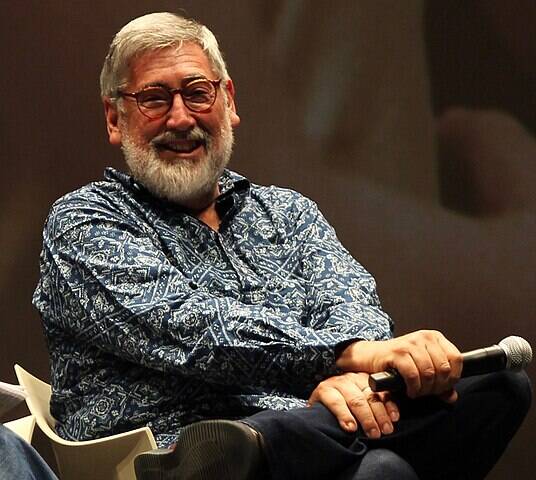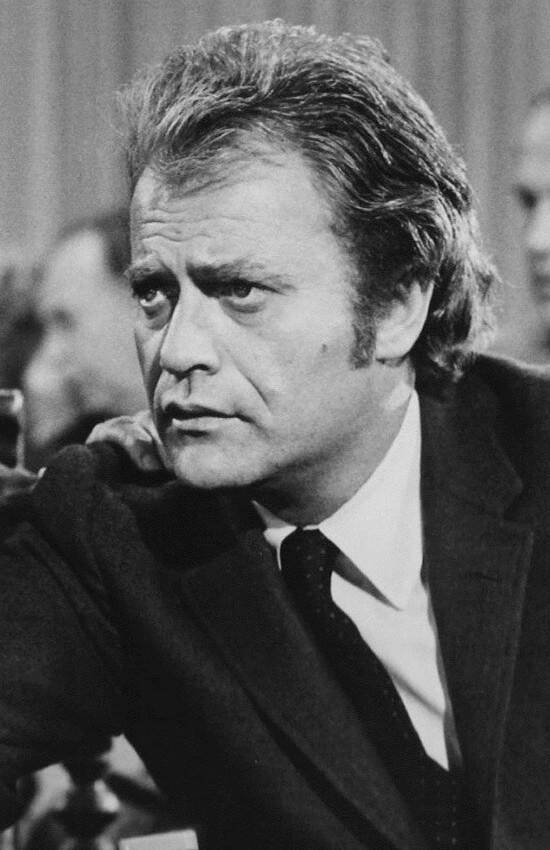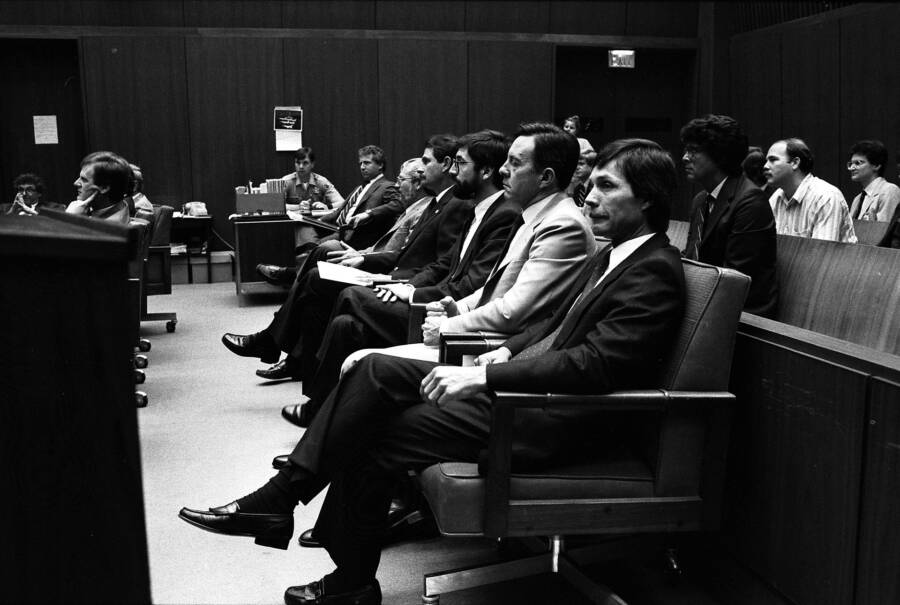On July 23, 1982, a helicopter stunt on the set of Twilight Zone: The Movie went horribly wrong, resulting in the gruesome deaths of Vic Morrow and child actors Myca Dinh Le and Renee Shin-Yi Chen.

Wikimedia CommonsThe helicopter crash resulted in the death of Vic Morrow and two young children.
John Landis was already an established filmmaker when he was hired to direct one of the four segments comprising Twilight Zone: The Movie (1983), based on the original Rod Serling series. But despite helming prior hits like The Blues Brothers and An American Werewolf in London, nothing could have prepared him for the deadly tragedy to come.
On July 23, 1982, Landis’ crew was filming a scene in Valencia, California with lead actor Vic Morrow and his two young co-stars, seven-year-old Myca Dinh Le and six-year-old Renee Shin-Yi Chen. Suddenly, a staged explosion caused an on-set helicopter to dip forward and crash, fatally dismembering all three actors and decapitating Morrow and Le.
Now considered one of history’s most tragic movie set disasters, the Twilight Zone movie accident was so horrific that it led to speculation that the production was cursed. However, investigations soon revealed that Landis had ignored various child labor laws and warnings about safety on set leading up to the accident.
The Twilight Zone incident resulted in a heated manslaughter trial. But it also sparked a dramatic upheaval in Hollywood, inspiring the introduction of several new safety protocols that would change the filmmaking industry for the better.
John Landis Lands Twilight Zone: The Movie
Born in Chicago, Illinois in 1950, John Landis was only eight years old when, after watching The 7th Voyage of Sinbad (1958), he decided to become a director.
Landis went on to make some of the most iconic American comedies of his generation, including The Blues Brothers (1980), Trading Places (1983) and Coming to America (1988). He also directed one of the most beloved music videos of all time when Michael Jackson himself tasked Landis to helm “Thriller.”

Pietro Luca Cassarino/Wikimedia CommonsFilmmaker John Landis in 2022.
The filmmaker was only 31 when, after agreeing to direct one of the four anthology segments in the highly anticipated Twilight Zone: The Movie, he became the de facto peer of cinema legends Steven Spielberg, Mad Max creator George Miller, and The Gremlins director Joe Dante, who each helmed a segment of the movie.
But before long, crew members would begin to note Landis’ apparent disregard for safety measures on set — an approach that would soon prove fatal.
“It was his attitude,” cameraman Stephen Lydecker later testified in court, according to The Washington Post. “He didn’t have time for suggestions from anybody.”
Trouble On Set
John Landis’ Twilight Zone movie segment, titled “Time Out,” tells the story of a bigoted man named Bill Connor who travels through time to witness the devastating effects of his racist beliefs.
During production, a producer suggested an alternate ending in which Connor, played by Vic Morrow, journeys to wartime Vietnam. There, he rescues two orphans whose village is being bombed by American helicopters.
To make this scene happen, Landis added explosions, a Bell UH-1 Iroquois military helicopter, and two child actors to the production. Some critics later speculated that Landis was aiming to achieve the visual dazzlement of Francis Ford Coppola’s Apocalypse Now.
Landis reportedly violated a number of child labor laws during the production, casting Myca Dinh Le and Renee Shin-Yi Chen without obtaining the required permits to do so and filming their scenes at night, which is specifically forbidden under California law. Renee’s uncle, Peter Wei-Te Chen, acted as a family representative for the children, accepting a cash deal from associate producer George Folsey Jr. on their behalf without any formal contract.
Neither casting nor on-set firefighters were informed of the decision to hire the children before filming began. At one point, the New York Times reports, a production secretary remembered hearing Landis joke, “We’re all going to jail!”
What’s more, Landis reportedly ignored a number of warnings about safety on set leading up to the Twilight Zone movie accident. When one stunt performer observed that an explosion meant to rock the helicopter was stronger than expected, Landis allegedly replied, “If you think that was big, you haven’t seen nothing yet.”
According to a 2023 El País article, Air Force veteran Dorcey Wingo, who had combat experience in Vietnam, piloted the helicopter on set. He had ominously noted that the chopper shook “abnormally” during prior explosives tests. However, a colleague warned him not to tell Landis because the director would likely fire him for making the complaint.
The Gruesome Twilight Zone Movie Accident

Wikimedia CommonsRenee Shin-Yi Chen (left) and Myca Dinh Le.
The Twilight Zone movie accident occurred on July 23, 1982 at around 2:20 a.m., at the Indian Dunes ranch in California.
That night, the crew was filming a scene in which a helicopter explodes behind Vic Morrow and his two young co-stars as they flee across a river. An explosion was rigged to go off behind the helicopter, which would then “crash” to the ground behind the actors in a fiery inferno.
Instead, the scene went horribly wrong. The explosives were far too powerful, and the helicopter’s flight path was too low. Randall Robinson, a cameraman onboard the helicopter, later claimed that a production assistant had ordered them to fly away as fast as possible when the explosives went off. Meanwhile, Landis was barking at them to continue descending.
“The shot is turning out great, but we’re going to lose the helicopter,” Landis allegedly said.
Wingo reportedly had a panic attack when the fireballs engulfed his chopper; and when explosive debris hit one of the blades and the tail rotor assembly abruptly fell apart mid-air, there was nothing the frantic pilot or his five passengers could do.
The helicopter crashed down into the river, where Morrow and the child actors were waiting on their marks. The helicopter’s blade sliced through Morrow and Le, killing them instantly. Chen was crushed beneath the chopper itself.
Chillingly, Morrow was scripted to tell his two young co-stars, “I’ll keep you safe, kids. I promise. Nothing will hurt you, I swear to God.” But Vic Morrow died before he got the chance to deliver these lines.
The Investigation Into The Crash

Wikimedia CommonsVic Morrow died instantly after he was decapitated by the helicopter’s blade.
In the wake of the Twilight Zone movie tragedy, the National Transportation Safety Board (NTSB) staged an investigation into the incident. In October 1984, they published a report detailing their findings.
They determined that the most probable cause for the crash was “the detonation of a debris-laden special effects explosion too near to a low flying helicopter.” This explosion caused damage to the rotor blade and caused the tail rotor assembly to detach, leading the helicopter to crash. Ultimately, the NTSB concluded that the accident was due to failures in communication and planning between the pilot, the film director, and other onset personnel.
In the months following the Twilight Zone incident, the families of the victims brought civil suits against the film’s producers and eventually received large settlements. Meanwhile, Landis, Folsey, Wingo, production manager Dan Allingham, and explosives expert Paul Stewart faced involuntary manslaughter charges for their roles in the accident.
The heated criminal trial spanned 10 months between April 1986 and February 1987. Los Angeles District Attorney Lea D’Agostino, who prosecuted the case, reportedly described Landis as a “white-collar killer” for his alleged disregard for safety on set. And while the public initially sympathized with Wingo, attitudes toward him soured when he suggested in court that Morrow would still be alive if he had followed his instructions to keep the helicopter in his sights.
“It extremely distresses me to the max that he never looked up,” Wingo said, according to a 1987 Los Angeles Times article. “He had over five seconds between the time that the sound of the helicopter changed and that impact… And I would hope to God that he could have used those five seconds to (escape).”
Wingo later insisted he hadn’t mean to blame Morrow. However, he confessed that believing Morrow could have done something to escape the helicopter was “one of the small, very small, comforts I have had.”
All five defendants were ultimately acquitted. According to the Times, this may have been due to a “bungled prosecution and a seemingly star-struck jury.” But the Twilight Zone movie accident’s impact was far from over.
The Legacy Of The Twilight Zone Movie Accident
Twilight Zone: The Movie hit theaters on June 24, 1983. It was a mild financial success, earning $42 million at the global box office, and debuted to middling reviews, with critics noting that the tragedy of the Twilight Zone movie accident hung over the film.
Steven Spielberg later told his biographer Joseph McBride that the accident ruined his friendship with Landis, calling the tragedy the worst moment of his career.
“No film is worth dying for,” Spielberg said. “If something isn’t safe, it’s the right and responsibility of every actor or crew member to yell, ‘Cut!'”
Meanwhile, the film industry began instituting various protocols to prevent such an accident from ever occurring again.

Wikimedia CommonsJohn Landis (center) and his co-defendants were acquitted in 1987.
The Directors Guild of America enacted far stricter enforcements for safety violations. The Screen Actors Guild, meanwhile, drafted new clauses in their contracts that allowed actors to leave sets where they felt unsafe — and introduced a 24-hour hotline to anonymously report violations. In the three years since the accident, the Christian Science Monitor reported that on-set accidents fell about 69 percent.
John Landis’ career appeared to slow down after the Twilight Zone movie incident. While he directed Coming to America in the late 1980s, most of his subsequent projects were critical flops, including Oscar (1991), Beverly Hills Cop III (1994), and Blues Brothers 2000 (1998).
In 1996, Landis finally addressed the tragedy in an interview with The Financial Times.
“There is nothing remotely positive in this whole story,” Landis reportedly told the publication. “It was an enormous tragedy that I have not stopped thinking about for a single day. It continues to haunt me and has had a profound impact on my career, from which I may never recover.”
After learning about the Twilight Zone movie accident and the death of Vic Morrow, read about 9 famous deaths that stunned Hollywood. Then, learn about Paul Walker’s fatal car crash.





